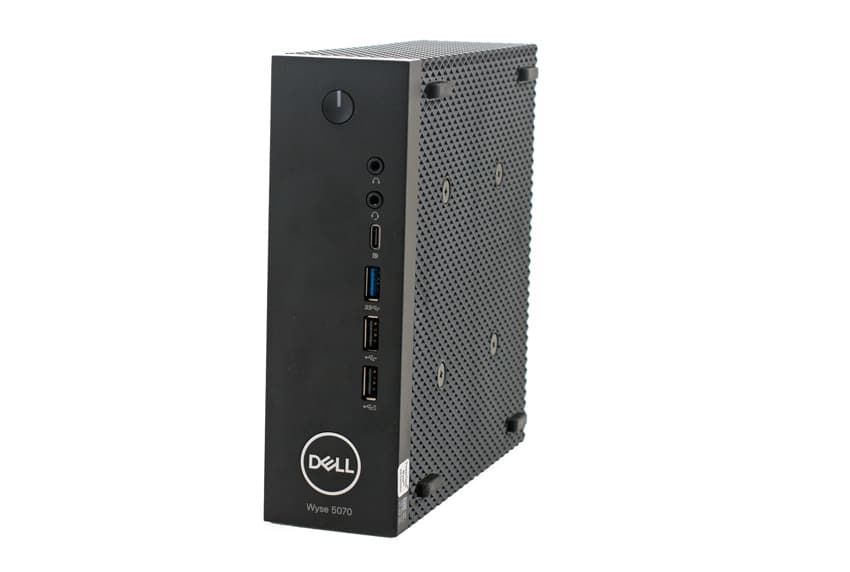Reviewing Dell’s Wyse 5070 thin client got me thinking about why organizations should consider updating their thin clients. Currently, I don’t believe as many companies have a refresh cycle for their thin clients as when VDI was just starting to take off, one of the initial selling points of VDI and thin clients was that the compute and storage for virtual desktops was done in the datacenter, as such, there would be no apparent reason to update the client that connects to the virtual desktop. Moreover, as most thin clients lack mechanical components, they seldom wear out, so it makes sense that an organization would avoid the expense of a refresh cycle for their thin clients. But, as mentioned above, after having worked with a new generation of thin clients, I have some reasons why you should consider refreshing your thin clients.

VDI really took off about five years ago when most users were task workers, working in call centers. At the time, VDI was positioned as a cost-efficient and easy-to-maintain solution for workers who used one or two applications. In the past five years, however, things have dramatically changed; today’s VDI users are far different than yesterday’s. We are seeing task workers using a multitude of applications and VDI and thin clients are being used in industries such as engineering, finance, as well as media and entertainment. Cost savings is no longer the only reason companies switch to thin clients. Security, reliability and performance are all legitimate reasons companies are making the switch. So, here are some specific reasons why companies should consider refreshing their thin clients.
The use cases for VDI users has greatly expanded– The whole purpose of a thin client is to allow a user to run the applications that they need in order to complete their daily activities as efficiently as possible. In the early days of thin clients, the use cases were limited to task workers who ran a few text-based applications. Now, we are seeing thin clients being used by a wider range of users. We still have task workers who run office applications, but these applications are video and graphic intensive, and unified communication applications such as Skype are common. We also have power users who are doing CAD/CAM and video editing using thin clients, and all classes of workers are using large, high definition monitors. It is no longer uncommon to see users using multiple 4K monitors to accomplish their daily tasks.
Server hardware has changed – In the last five years we have seen the power of servers greatly increase. CPUs have more cores, RAM has dramatically fallen in price and we use flash for persistent storage. We also have powerful, reasonably-priced GPUs that can be used by virtual desktops. This means that we can have a greater density of higher powered thin clients that can lower the cost of VDI and accommodate this new class of thin client users.
VDI offerings have changed – To accommodate this new breed of thin client users and to take advantage of the latest datacenter hardware, the VDI software suppliers have changed their offerings. On-premise, private and public cloud desktops, as well as PC as a Service (PaaS) are all now viable options. To accommodate the increased power demands of today’s thin client users, suppliers have changed their display protocols and the types of displays that they support. Old thin clients are incapable of support hi-res displays or the latest display protocols or multi-head setups beyond one or two displays.
VDI client hardware has changed– The thin client has dramatically changed over the last five years. For example, let’s compare two VDI clients: the Wyse V10L, which was a very popular thin client in its day, and the Wyse 5070, which I just finished reviewing. The Wyse V10L had a VIA Eden 800 MHz CPU, 128MB of RAM, a single DVI port, 2 USB ports and 100Mbs wired ethernet. The Wyse 5070, on the other hand, has an Intel Pentium quad-core CPU, 8GB of DDR4 RAM, 64GB flash hard drive and an AMD Radeon 9173 PCI-E graphics card. The 5070 also supports up to 6 monitors (four 4K monitors and two 2K monitors), 1Gbs wired ethernet, wireless ethernet, and has a SFP networking port; it also has 21 ports for connectivity, including Smartcard/CAC reader and a USB 3.1 Type C port.
The new class of thin client is more than capable of handling anything a modern virtual desktop can throw at them. For example, I monitored the Wyse 5070’s CPU usage while rotating a 3D model on a system configured with dual 4K displays. In this instance, the highest level of CPU usage of the device was 23%. The huge amount of data being sent over the network would overwhelm the network capabilities of the older generation of thin clients. In short, modern thin clients are needed to take advantage of the power of today’s VDI environment.
Yesterday’s thin clients simply can’t support the workloads that we run in today’s virtual desktop infrastructure. Whether it be the latest remote display protocols, the latest in security and multiple high-res monitors, today’s thin clients are capable of supporting them. Over the last few years, virtual desktop technology has changed and you need to take a look at your thin clients to make sure that they can support and take advantage of these changes. In addition to these findings, Dell has additional ideas around thin client benefits.




 Amazon
Amazon